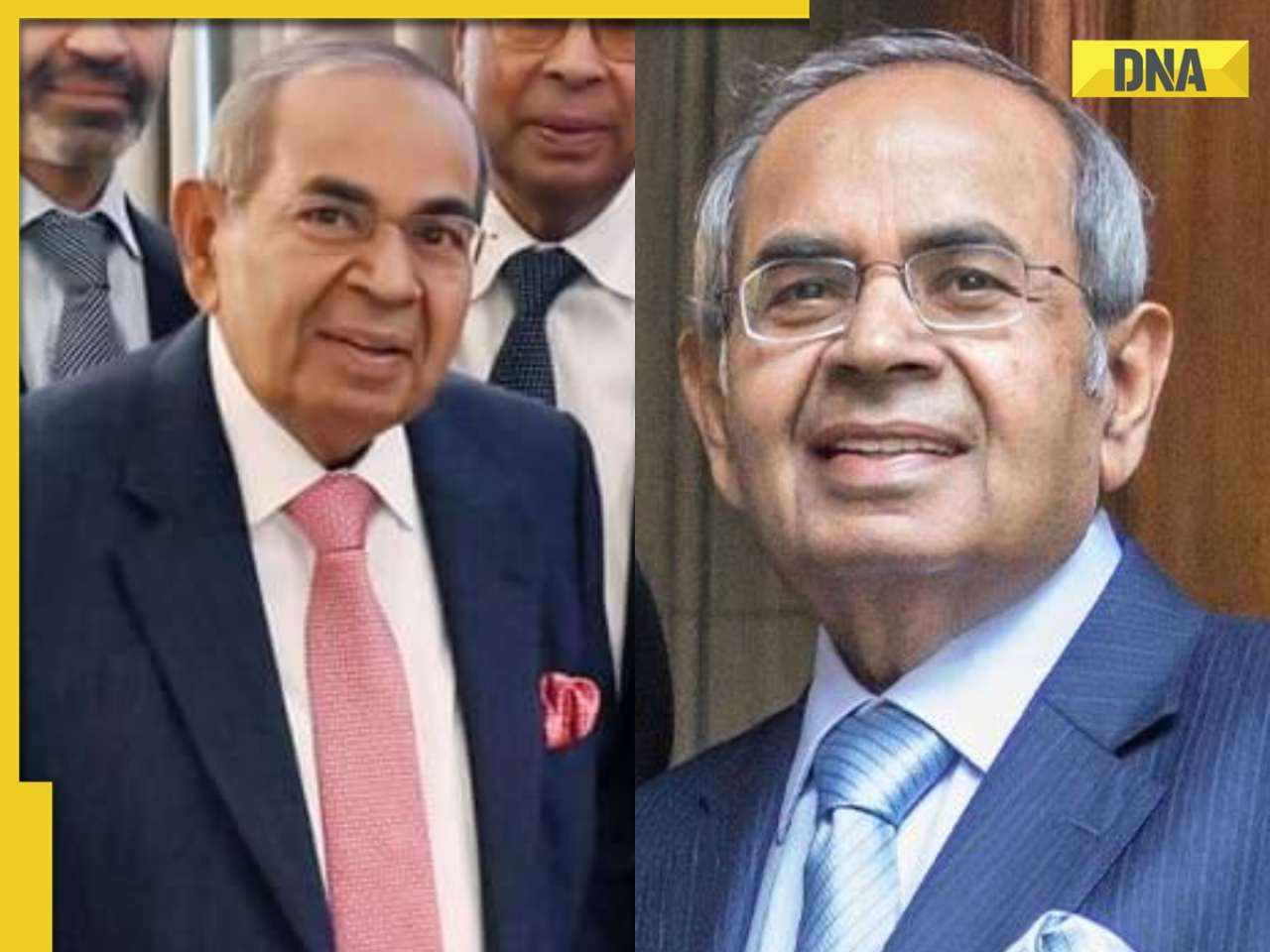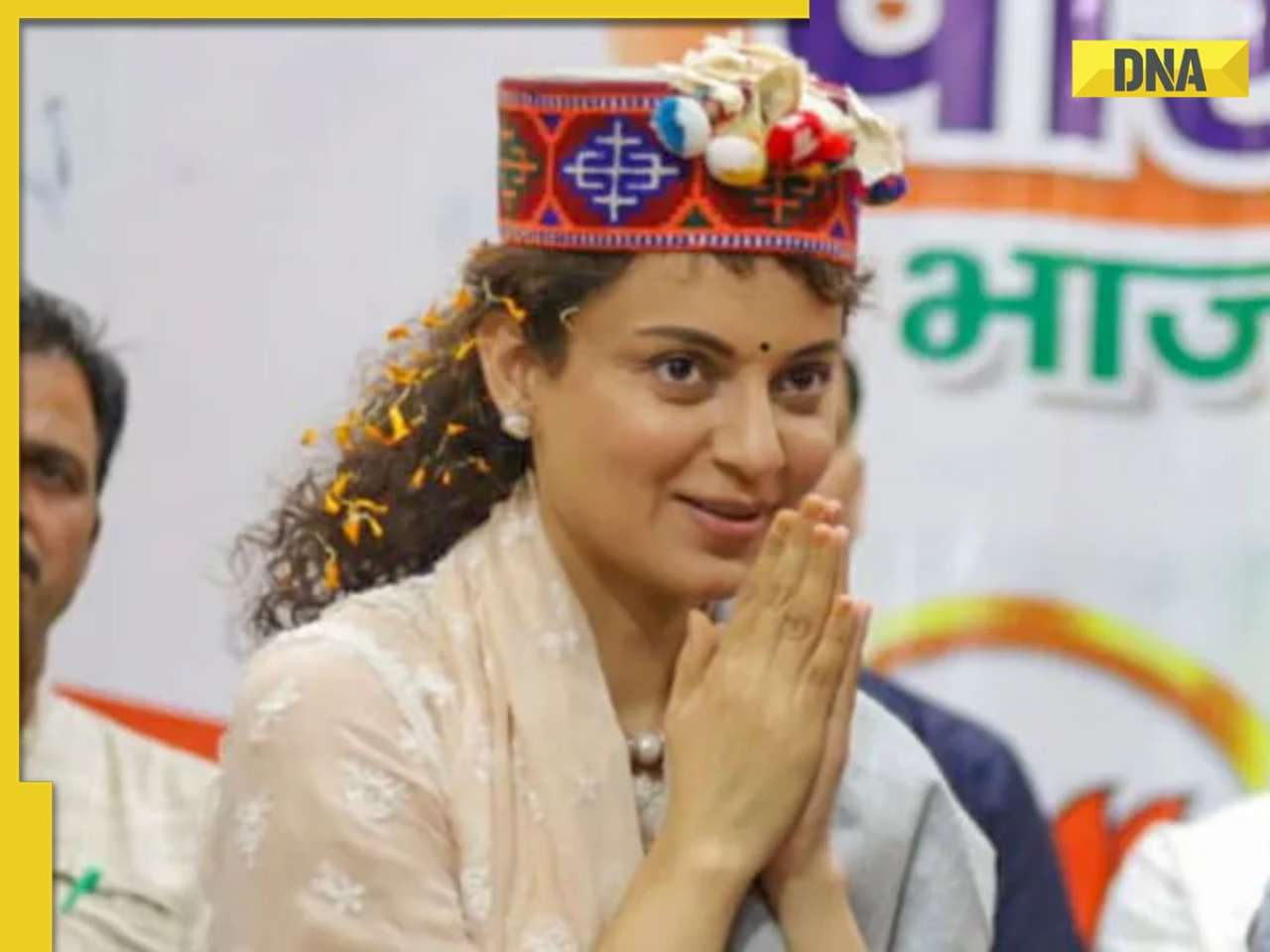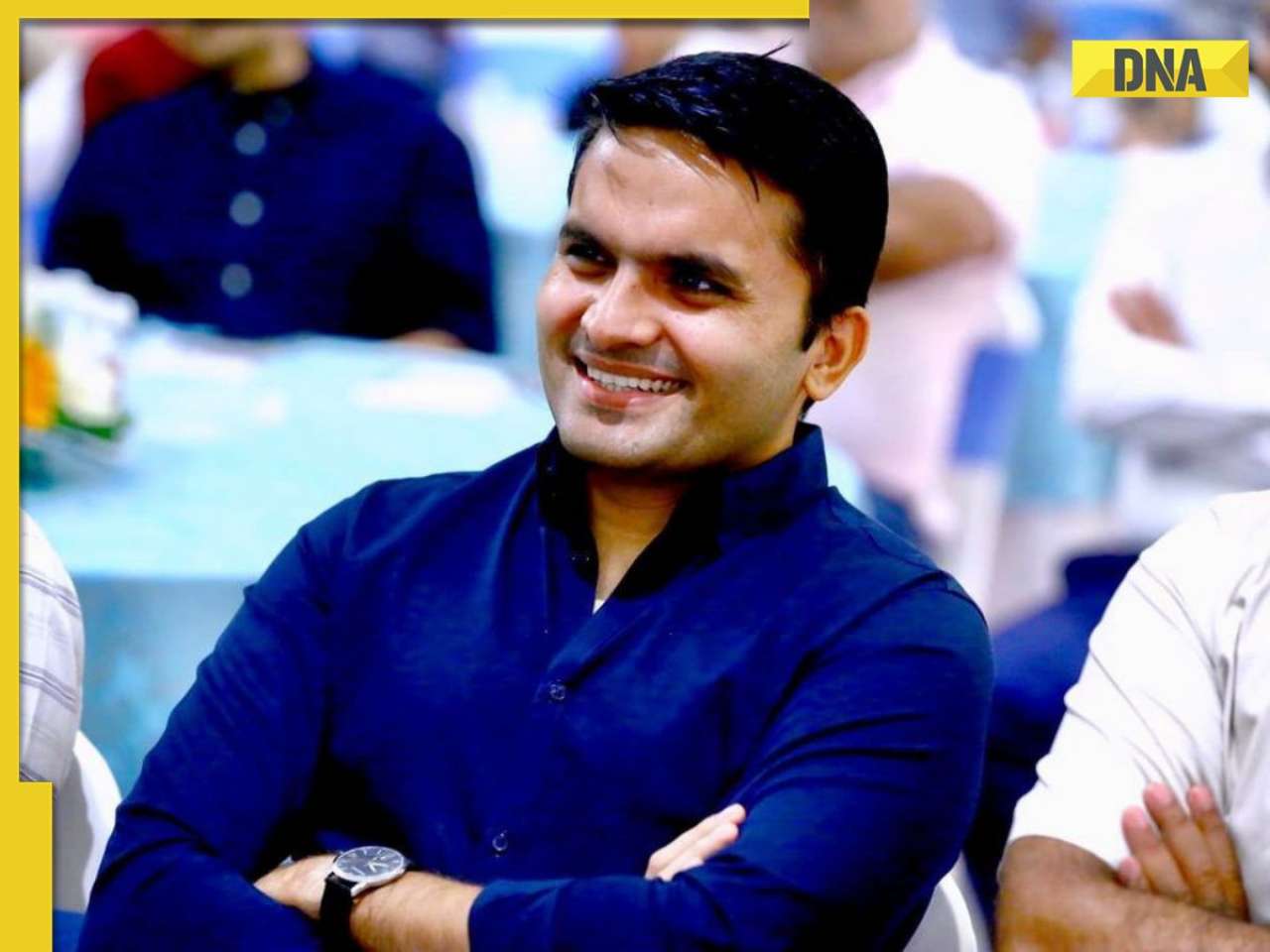Ajay Reddy, Founder of GoUnesco Travel Challenge lists out five world heritage sites in India that are enchanting yet not as popular
India has 30 world heritage sites and some of them are extremely popular. Sites like the Taj Mahal, Ajanta and Ellora caves are known the world over for their splendour and are visited by hundreds of thousands of tourists every year. However, there are some equally outstanding examples of heritage in our country, which are designated as world heritage sites by UNESCO but are hardly known. Many are off the tourist trail, in spite of being quite accessible. Some, like the Chattrapati Shivaji Terminus, are visited by thousands of people everyday, but hardly anyone knows its significance or value to the whole of humanity. From 10,000 year old cave paintings which provide a glimpse into the early man's life, to an extraordinary fort with more than 300 temples inside its walls, these world heritage sites deserve better attention.
Group of Monuments at Pattadakal
Pattadkal is a great center for Chalukya art. It was an important center under the Rashtrakuta dynasty too. The art at the monuments which are part of the world heritage site display a harmonious blend of architectural forms of northern and southern India. Unfortunately, the nearby temples at Badami usually overshadow the fancy of tourists and the bad state of approach roads doesn't help either. Known as the City of the Crown Rubies, Nine of the temples are Hindu temples and the remaining one is a Jain temple.

Rock Shelters of Bhimbetka
Bhimbetka, a world heritage site about 50km away from the bustling city of Bhopal, are home to rock paintings dated 10000 years old. On any given day however, you would be lucky if you see even a few tourists here. It may not be as grand as the Taj Mahal, but they are still the most famous in academic circles.
They are situated some 28 miles (45 km) south of Bhopal, in west-central Madhya Pradesh state. Discovered in 1957, the complex consists of some 700 shelters and is one of the largest repositories of prehistoric art in India. The shelters were designated a UNESCO World Heritage Site in 2003. The complex is surrounded by the Ratapani Wildlife Sanctuary.
The Bhimbetka region is riddled with massively sculpted formations in the sandstone rock. On the Bhimbetka site’s hill alone, where the bulk of the archaeological research has been concentrated since 1971, 243 shelters have been investigated, of which 133 contain rock paintings. In addition to the cave paintings, archaeologists have unearthed large numbers of artifacts in the caves and in the dense teak forests and cultivated fields around Bhimbetka, the oldest of which are Acheulean stone tool assemblages.
The paintings, which display great vitality and narrative skill, are categorized into different prehistoric periods. The oldest are dated to the Late Paleolithic period (Old Stone Age) and consist of large linear representations of rhinoceroses and bears. Paintings from Mesolithic (Middle Stone Age) times are smaller and portray, in addition to animals, human activities. Drawings from the Chalcolithic Period (early Bronze Age) showcase the early humans’ conceptions of agriculture. Finally, the decorative paintings dating to early historical times depict religious motifs, including tree gods and magical sky chariots.
The caves provide a rare glimpse at a sequence of cultural development from early nomadic hunter-gatherers to settled cultivators to expressions of spirituality. It has been observed that the present-day cultural traditions of agrarian peoples inhabiting the villages surrounding Bhimbetka resemble those represented in the paintings.

Chhatrapati Shivaji Terminus / Victoria Terminus
It has seen a bloody massacre, over 1,000 trains and three million passengers pass through it daily. Hardly anyone pauses to consider the significance of this beautiful monument originally built to commemorate the Golden Jubilee of Queen Victoria. The Chhatrapati Shivaji Terminus is an outstanding example of the meeting of two cultures, as British architects worked with Indian craftsmen to include Indian architectural tradition and idioms.
The main architecture of the building reflects the Victorian Gothic styles and designs of the late 19th century. The style and the ornamentation of the edifice were acceptable to both Indian and European culture. Complete with turrets, pointed arches and an eccentric ground plan, the CST was a novel achievement during that period. To date, the building retains most of the architectural designs with probably, an addition of two or more headquarters. The CST was built in accordance to a C-shaped plan, symmetrical on both, the east and the west axis. Crowned by a high dome, which is the focal point of the structure, the CST building is adjoined with well-proportioned rows of arched structures, rows and windows, closely resembling Indian palace architectures.
The entrance of the Chhatrapati Shivaji terminus is flanked by figures of a lion and a tiger representing the two countries-great Britain and India. The main structure is made of sandstone and limestone, and the interiors of the station are lined with high-quality Italian marble. Apart from the 18 railway lines, the CST also houses the main headquarters, the Star Chamber, grotesques and the North Wing.

Airavatesvara Temple at Darasuram
The temple, dedicated to Lord Shiva, took more than 25 years to build. A fine example of Dravidian culture and heritage, it is much smaller and less famous compared to the Brihadisvara temple at Tanjavur and Gangaikondacholapuram. The gopuram of this temple is 85 feet high. You are bound to be mesmerised by the first sight of this temple's exquisite architecture, sculptures and paintings. The entire temple is said to been built with Nithya-Vinoda (perpetual entertainment) in mind.
The south side of the front mandapam(Muha mandapam) is in the form of large chariot with large stone wheels drawn by horses. Some of the pillars tell stories of Thiruvilaiyadal of lord Shiva, wedding scenes of Shiva and Parvathi, Kanthapuranam stories and more dancing poses of Shiva. The 100 pillars mandapam leads to Periyanayagi Shrine and Airavateeswara Shrine.
The west side of the temple has panels of socio-cultural aspects of Chola period, which are revealed in these small panels—ranging from Periyapuranam, punishments, dance etc., Airavateeswara temple corridor around the temple has plenty of sculptures and paintings.

Kumbhalgarh fort
With a 36km wall second only to the Great Wall in China, the Kumbhalgarh fort is one of those rare forts which was never attacked. Located about 85km from Udaipur, this fort is usually off the tourist trail. Kumbhalgarh bears testimony to the power of the Rajput princely states that flourished in the region from the 8th to the 18th centuries. A testimony to the ingenuity of the legendary Maha rana Kumbha, it draws as much accolades as the formidable fortress of Chittorgarh. You can troop to this inviolable piece of architecture by opting for a drive, from Kelwara, through the seven magnificent 'pols' or entrances. The last of these entry points called the 'Nimboo Pol', has the legends of history associated with it. The fort went through a complete overhaul during the reign of King Fateh Singh in the nineteenth century.
You can also make a dash for the numerous( about three hundred and sixty) elegant mansions, dilapidated shrines, 'baoris', and verdant parks that dots the length and breadth of this breathtaking beauty. Head towards the 'Badal Mahal' and catch a spellbinding panoramic view of the surroundings
Photo Credits:
Darasuram - Madhumita Gopalan
CST - Madhumita Gopalan
Pattadakal - Ajay Reddy
Bhimbetka - Ajay Reddy
Kumbhalgarh Fort- Shripal Gandhi
Coordinated by Rama Sreekant
![submenu-img]() Meet man, an Indian, whose family topped list of richest people in the UK with net worth of...
Meet man, an Indian, whose family topped list of richest people in the UK with net worth of...![submenu-img]() Pune: Tanker explodes in Pimpri Chinchwad, nearby hotels, houses and parked trucks damaged
Pune: Tanker explodes in Pimpri Chinchwad, nearby hotels, houses and parked trucks damaged![submenu-img]() Rohit Sharma lashes out at IPL TV broadcaster for 'breach of privacy'
Rohit Sharma lashes out at IPL TV broadcaster for 'breach of privacy'![submenu-img]() Heeramandi lyricist AM Turaz on Azadi: 'Women's contribution in Indian freedom movement has never been...' | Exclusive
Heeramandi lyricist AM Turaz on Azadi: 'Women's contribution in Indian freedom movement has never been...' | Exclusive![submenu-img]() Kangana Ranaut reveals if she will quit films after winning Lok Sabha elections, calls Bollywood 'jhoothi duniya'
Kangana Ranaut reveals if she will quit films after winning Lok Sabha elections, calls Bollywood 'jhoothi duniya'![submenu-img]() Meet IAS officer, daughter of milk vendor, who cracked UPSC in second attempt, secured AIR...
Meet IAS officer, daughter of milk vendor, who cracked UPSC in second attempt, secured AIR...![submenu-img]() UGC NET June 2024: Registration window closes today; check how to apply
UGC NET June 2024: Registration window closes today; check how to apply![submenu-img]() Meet IAS officer, son of teacher from Rajasthan, who cracked UPSC after multiple failed attempts, secured AIR...
Meet IAS officer, son of teacher from Rajasthan, who cracked UPSC after multiple failed attempts, secured AIR...![submenu-img]() Meet IIT graduates, three friends who were featured in Forbes 30 Under 30 Asia list, built AI startup, now…
Meet IIT graduates, three friends who were featured in Forbes 30 Under 30 Asia list, built AI startup, now…![submenu-img]() Meet woman who cracked UPSC in fourth attempt to become IAS officer, secured AIR...
Meet woman who cracked UPSC in fourth attempt to become IAS officer, secured AIR...![submenu-img]() DNA Verified: Is CAA an anti-Muslim law? Centre terms news report as 'misleading'
DNA Verified: Is CAA an anti-Muslim law? Centre terms news report as 'misleading'![submenu-img]() DNA Verified: Lok Sabha Elections 2024 to be held on April 19? Know truth behind viral message
DNA Verified: Lok Sabha Elections 2024 to be held on April 19? Know truth behind viral message![submenu-img]() DNA Verified: Modi govt giving students free laptops under 'One Student One Laptop' scheme? Know truth here
DNA Verified: Modi govt giving students free laptops under 'One Student One Laptop' scheme? Know truth here![submenu-img]() DNA Verified: Shah Rukh Khan denies reports of his role in release of India's naval officers from Qatar
DNA Verified: Shah Rukh Khan denies reports of his role in release of India's naval officers from Qatar![submenu-img]() DNA Verified: Is govt providing Rs 1.6 lakh benefit to girls under PM Ladli Laxmi Yojana? Know truth
DNA Verified: Is govt providing Rs 1.6 lakh benefit to girls under PM Ladli Laxmi Yojana? Know truth![submenu-img]() Kiara Advani attends Women In Cinema Gala in dramatic ensemble, netizens say 'who designs these hideous dresses'
Kiara Advani attends Women In Cinema Gala in dramatic ensemble, netizens say 'who designs these hideous dresses'![submenu-img]() Influencer Diipa Büller-Khosla looks 'drop dead gorgeous' in metallic structured dress at Cannes 2024
Influencer Diipa Büller-Khosla looks 'drop dead gorgeous' in metallic structured dress at Cannes 2024![submenu-img]() Kiara Advani stuns in Prabal Gurung thigh-high slit gown for her Cannes debut, poses by the French Riviera
Kiara Advani stuns in Prabal Gurung thigh-high slit gown for her Cannes debut, poses by the French Riviera![submenu-img]() Heeramandi star Taha Shah Badussha makes dashing debut at Cannes Film Festival, fans call him ‘international crush’
Heeramandi star Taha Shah Badussha makes dashing debut at Cannes Film Festival, fans call him ‘international crush’![submenu-img]() Streaming This Week: Madgaon Express, Zara Hatke Zara Bachke, Bridgerton season 3, latest OTT releases to binge-watch
Streaming This Week: Madgaon Express, Zara Hatke Zara Bachke, Bridgerton season 3, latest OTT releases to binge-watch![submenu-img]() Haryana Political Crisis: Will 3 independent MLAs support withdrawal impact the present Nayab Saini led-BJP government?
Haryana Political Crisis: Will 3 independent MLAs support withdrawal impact the present Nayab Saini led-BJP government?![submenu-img]() DNA Explainer: Why Harvey Weinstein's rape conviction was overturned, will beleaguered Hollywood mogul get out of jail?
DNA Explainer: Why Harvey Weinstein's rape conviction was overturned, will beleaguered Hollywood mogul get out of jail?![submenu-img]() What is inheritance tax?
What is inheritance tax?![submenu-img]() DNA Explainer: What is cloud seeding which is blamed for wreaking havoc in Dubai?
DNA Explainer: What is cloud seeding which is blamed for wreaking havoc in Dubai?![submenu-img]() DNA Explainer: What is Israel's Arrow-3 defence system used to intercept Iran's missile attack?
DNA Explainer: What is Israel's Arrow-3 defence system used to intercept Iran's missile attack?![submenu-img]() Heeramandi lyricist AM Turaz on Azadi: 'Women's contribution in Indian freedom movement has never been...' | Exclusive
Heeramandi lyricist AM Turaz on Azadi: 'Women's contribution in Indian freedom movement has never been...' | Exclusive![submenu-img]() Kangana Ranaut reveals if she will quit films after winning Lok Sabha elections, calls Bollywood 'jhoothi duniya'
Kangana Ranaut reveals if she will quit films after winning Lok Sabha elections, calls Bollywood 'jhoothi duniya'![submenu-img]() Sanjay Leela Bhansali calls this actor his only friend in industry: 'He doesn't care about my film, he cares about me'
Sanjay Leela Bhansali calls this actor his only friend in industry: 'He doesn't care about my film, he cares about me'![submenu-img]() Jolly LLB 3: Akshay Kumar wraps up first schedule; local artiste reveals actor's inspiring daily habits
Jolly LLB 3: Akshay Kumar wraps up first schedule; local artiste reveals actor's inspiring daily habits![submenu-img]() Before Ranveer Singh, Deepika Padukone; Bajirao Mastani was announced with these two superstars in 70s, it got shelved
Before Ranveer Singh, Deepika Padukone; Bajirao Mastani was announced with these two superstars in 70s, it got shelved![submenu-img]() Viral video: Donkey stuns internet with unexpected victory over hyena, watch
Viral video: Donkey stuns internet with unexpected victory over hyena, watch![submenu-img]() Viral video: 'Breathtaking' blue meteor illuminates skies over Spain and Portugal, watch
Viral video: 'Breathtaking' blue meteor illuminates skies over Spain and Portugal, watch![submenu-img]() Google CEO Sundar Pichai reveals his favourite foods in Delhi, Mumbai, Bengaluru and they are...
Google CEO Sundar Pichai reveals his favourite foods in Delhi, Mumbai, Bengaluru and they are...![submenu-img]() Cow fight injures two girls enjoying street snacks, video goes viral
Cow fight injures two girls enjoying street snacks, video goes viral![submenu-img]() Viral video: Man sets up makeshift hammock on bus, internet reacts
Viral video: Man sets up makeshift hammock on bus, internet reacts







































)














)
)
)
)




)
)
)
)
)
)